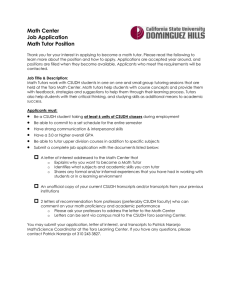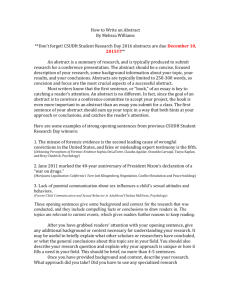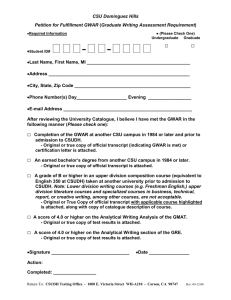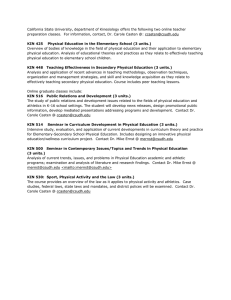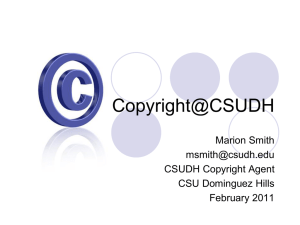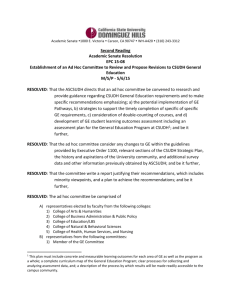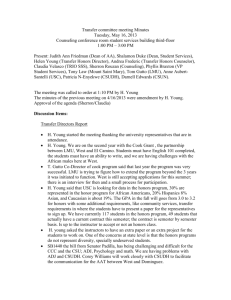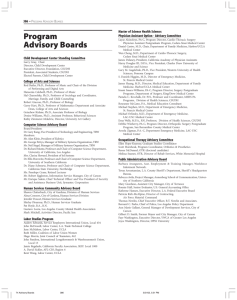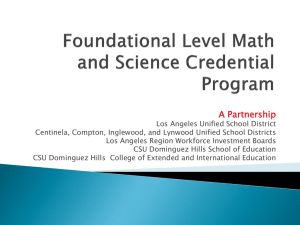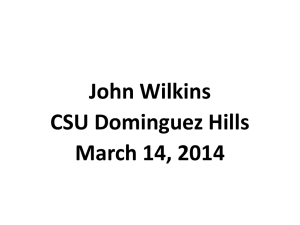Student Learning Outcomes at CSUDH
advertisement
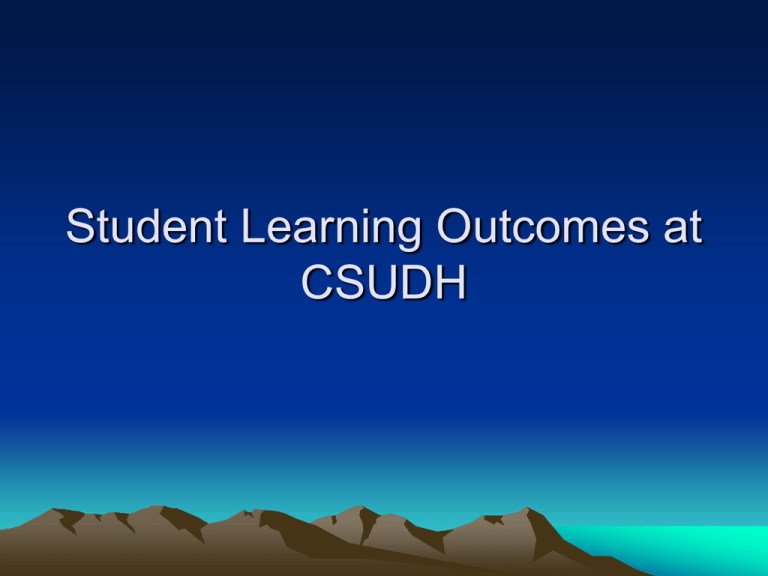
Student Learning Outcomes at CSUDH Outcomes assessment can tell us if our students are really learning what we think they should be able to do. Student Learning Outcomes: • Are the cognitive knowledge, behavioral skills and/or affective values you expect your students to achieve. • Must be stated in measurable terms. • Are faculty-generated. How to get started • The first step in the process is for the departmental faculty to meet and decide on the outcomes. There usually should be between 5-10 of these. • For accredited programs, many of the outcomes will already be specified. • Produce a curriculum map to see how these are covered in the curriculum. I = concept introduced; R = concept reinforced; F = final assessment Outcome Number 101 120 122 161 223 245 266 313 325 345 355 362 375 380 421 435 446 453 455 490 1 2 I I R 3 4 5 6 I 7 I I R R R R R R R R R R R R R R R R R R R R R R R R F F F R R R R R R F The program-level outcomes should link with both the University Strategic Framework and with course-level outcomes. Not every outcome need link to the Strategic Framework, but every program should have at least a few connections. Mission CSUDH Strategic Framework We provide education, scholarship and service that are, by design, accessible and transformative. We welcome students who seek academic achievement, personal fulfillment, and preparation for the work of today and tomorrow. Vision By 2015, we are known as a gathering place where: • • • • • • • Diversity in all its forms is explored, understood, and transformed into knowledge and practice that benefit the world. Our use of technology allows us to transcend our boundaries as we reach out to students, both locally and globally. Sustainable environmental, social, and economic practices are a way of life. Our educational partnerships ensure pathways and support for local students to aspire to and complete a college degree. We are engaged in serving the dynamic needs of the surrounding communities. Student life is meaningful and vibrant. Our accomplishments and those of our alumni are recognized nationally and internationally. As a result, our students graduate with an exemplary academic education and a genuine commitment to justice and social responsibility. Core Values • • • • • • Collaboration among all segments of the campus community Continuous Learning that improves teaching, scholarship, and service Rigorous Standards of excellence in all our practices. Proactive Partnerships with our communities Respect for diversity in all forms Responsiveness to the needs of students and society Course-level outcomes • These should be stated in the Student Learning Outcomes. • The link between the Program-level outcomes and the Course-level outcomes can be put into a table included in the worksheet. The program should also choose its assessment tools. Indirect assessments • Surveys of students, graduates, and employers • Exit interviews • Focus groups Direct assessments • Scoring Rubrics: can be used to holistically score any product or performance such as essays, portfolios, recitals, oral exams, research reports, etc • Capstone Courses • Case Studies • Embedded Questions to Assignments • Standardized Achievement Tests • Locally developed exams with objective questions • Locally developed essay questions • Reflective Essays • Collective Portfolios Although both indirect and direct measures can be used to assess student learning, direct measures yield better, more reliable data. The program needs also to decide what level of achievement of each of the outcomes is acceptable. Then start assessing! • Create a schedule for assessing the outcomes. • Collect the data and analyze it. • See if the students have achieved the preset goals. • If they have, then continue assessing on a regular schedule to make sure they keep making the goals. If the students are not achieving the goals: • The program should meet to decide on a course of action to correct the problem. • If curricular changes are required, these should be initiated and completed. Closing the Loop • Once the changes are implemented, data collection should ensue to see if the changes produced the improvement in outcomes desired. • If not, the program should again work out a solution that would address the problem, and implement it. • If successful, continue the assessment process on a regular schedule to make sure that learning continues to occur. For links to rubrics, syllabus construction, and forms, the SLOA website at http://www.csudh.edu/academic affairs/sloa/default.shtml can help. I am also available for one-onone help at cjacobs@csudh.edu
